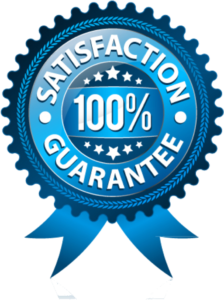According to the information provided in Table 12-1, what is the average time spent by a person in this system?
81) According to the information provided
in Table 12-1, what is the average time spent by a person in this system?
A) 0.058 minute
B) 1.646 minutes
C) 0.521 minute
D) 0.183 minute
E) None of the above
82) According to the information provided
in Table 12-1, what percentage of the total available service time is being
used?
A) 72.0%
B) 28.0%
C) 56.3%
D) It could be any of the above, depending
on other factors.
E) None of the above
83) Cars arrive at a local JLUBE franchise
at the rate of 1 every 12 minutes. Service times are exponentially distributed
with an average of 15 minutes. Jack Burns, the JLUBE owner, has decided to open
a second work bay, i.e., make the shop into a two-channel system. Under this
new scheme, the average customer will wait in an ________ line.
A) M/M/1
B) M/M/2
C) M/D/2
D) M/D/1
E) M/G/2
84) Cars arrive at a local JLUBE franchise
at the rate of 1 every 12 minutes. Service times are exactly 15 minutes. Jack
Burns, the JLUBE owner, has decided to open a second work bay, i.e., make the
shop into a two-channel system. Under this new scheme, the average customer
will wait in an ________ line.
A) M/M/1
B) M/M/2
C) M/D/2
D) M/D/1
E) M/G/2
85) Cars arrive at a local JLUBE franchise
at the rate of 1 every 12 minutes. Service times are exponentially distributed
with an average of 15 minutes. Jack Burns, the JLUBE owner, has decided to open
a second work bay, i.e., make the shop into a two-channel system. Under this
new scheme, the average customer will wait in line
A) approximately 9.6 minutes.
B) approximately 2.5 minutes.
C) approximately 24.6 minutes.
D) approximately 2.1 minutes.
E) None of the above
86) Cars arrive at a local JLUBE franchise
at the rate of 1 every 12 minutes. Service times are exponentially distributed
with an average of 15 minutes. Jack Burns, the JLUBE owner, has decided to open
a second work bay, i.e., make the shop into a two-channel system. Under this
new scheme, the total time an average customer spends in the system will be
A) 37 minutes.
B) 2.1 minutes.
C) 9.6 minutes.
D) 33.3 minutes.
E) 24.6 minutes.
Table 12-2
M/M/2
Mean Arrival Rate:
5 occurrences per minute
Mean Service Rate:
3 occurrences per minute
Number of Servers:
2
Queue Statistics:
Mean Number of Units in the System:
5.455
Mean Number of Units in the Queue:
3.788
Mean Time in the System:
1.091 minutes
Mean Time in the Queue:
0.758 minutes
Service Facility Utilization Factor:
0.833
Probability in No Units in System:
0.091
87) According to the information provided
in Table 12-2, which presents a queuing problem solution, on average, how many
units are in the line?
A) 5.455
B) 3.788
C) 1.091
D) 0.758
E) 0.833
88) According to the information provided
in Table 12-2, which presents a queuing problem solution, what proportion of
time is at least one server busy?
A) 0.833
B) 0.758
C) 0.091
D) 0.909
E) None of the above
89) According to the information provided
in Table 12-2, which presents a queuing problem solution, there are two servers
in this system. Counting each person being served and the people in line, on
average, how many people would be in this system?
A) 5.455
B) 3.788
C) 9.243
D) 10.900
E) None of the above
Table 12-3
M/M/3
Mean Arrival Rate:
4 occurrences per minute
Mean Service Rate:
2 occurrences per minute
Number of Servers:
3
Queue Statistics:
Mean Number of Units in the System:
2.889
Mean Number of Units in the Queue:
0.889
Mean Time in the System:
0.722 minutes
Mean Time in the Queue:
0.222 minutes
Service Facility Utilization Factor:
0.667
Probability in No Units in System:
0.111
90) According to the information provided
in Table 12-3, which presents a queuing problem solution, what proportion of
time is the system totally empty?
A) 0.111
B) 0.333
C) 0.889
D) 0.667
E) None of the above
91) According to the information provided
in Table 12-3, which presents a queuing problem solution, on average, how long
does each customer spend waiting in line?
A) 0.333 minute
B) 0.889 minute
C) 0.222 minute
D) 0.722 minute
E) 0.111 minute
92) According to the information provided
in Table 12-3, which presents a queuing problem solution, what is the
utilization rate of the service facility?
A) 0.111
B) 0.889
C) 0.222
D) 0.722
E) 0.667
93) Little’s Flow Equations are
transferable to a production environment. Which of the following would be a
proper interpretation of Little’s Flow Equations?
A) Flow Rate = Inventory Flow Time
B) Flow Time = Inventory Flow Rate
C) Inventory = Flow Rate Flow Time
D) Time to Take an Order = Flow Rate
Flow Time
E) Flow Rate = Time to Take an Order
Flow Time
94) If everything else remains constant,
including the mean arrival rate and service rate, except that the service time
becomes constant instead of exponential,
A) the average queue length will be
halved.
B) the average waiting time will be
doubled.
C) the average queue length will be
doubled.
D) There is not enough information to know
what will happen to the queue length and waiting time.
E) None of the above
95) At an automatic car wash, cars arrive
randomly at a rate of 7 cars every 30 minutes. The car wash takes exactly 4
minutes (this is constant). On average, what would be the length of the line?
A) 8.171
B) 7.467
C) 6.53
D) 0.467
E) None of the above
96) At an automatic car wash, cars arrive
randomly at a rate of 7 every 30 minutes. The car wash takes exactly 4 minutes
(this is constant). On average, how long would each car spend at the car wash?
A) 28 minutes
B) 32 minutes
C) 17 minutes
D) 24 minutes
E) None of the above
97) At an automatic car wash, cars arrive
randomly at a rate of 7 every 30 minutes. The car wash takes exactly 4 minutes
(this is constant). On average, how long would each driver have to wait before
receiving service?
A) 28 minutes
B) 32 minutes
C) 17 minutes
D) 24 minutes
E) None of the above
98) At an automatic car wash, cars arrive
randomly at a rate of 7 every 30 minutes. The car wash takes exactly 4 minutes
(this is constant). On average, how many customers would be at the car wash
(waiting in line or being serviced)?
A) 8.17
B) 7.46
C) 6.53
D) 0.46
E) None of the above
99) A(n) ________ state is the normal
operating condition of the queuing system.
A) primary
B) transient
C) NOC
D) balanced
E) steady
100) At a local fast food joint, cars
arrive randomly at a rate of 12 every 30 minutes. The fast food joint takes
exactly 2 minutes (this is constant). The average total time in the system is
A) 5.4 minutes.
B) 6.0 minutes.
C) 8.0 minutes.
D) 2.5 minutes.
E) None of the above
Table 12-4
M/D/1
Mean Arrival Rate:
3 occurrences per minute
Constant Service Rate:
4 occurrences per minute
Queue Statistics:
Mean Number of Units in the System:
1.875
Mean Number of Units in the Queue:
1.125
Mean Time in the System:
0.625 minutes
Mean Time in the Queue:
0.375 minutes
Service Facility Utilization Factor:
0.750
Probability in No Units in System:
0.250
81) According to the information provided
in Table 12-1, what is the average time spent by a person in this system?A) 0.058 minuteB) 1.646 minutesC) 0.521 minuteD) 0.183 minuteE) None of the above82) According to the information provided
in Table 12-1, what percentage of the total available service time is being
used?A) 72.0%B) 28.0%C) 56.3%D) It could be any of the above, depending
on other factors.E) None of the above83) Cars arrive at a local JLUBE franchise
at the rate of 1 every 12 minutes. Service times are exponentially distributed
with an average of 15 minutes. Jack Burns, the JLUBE owner, has decided to open
a second work bay, i.e., make the shop into a two-channel system. Under this
new scheme, the average customer will wait in an ________ line.A) M/M/1B) M/M/2C) M/D/2D) M/D/1E) M/G/284) Cars arrive at a local JLUBE franchise
at the rate of 1 every 12 minutes. Service times are exactly 15 minutes. Jack
Burns, the JLUBE owner, has decided to open a second work bay, i.e., make the
shop into a two-channel system. Under this new scheme, the average customer
will wait in an ________ line.A) M/M/1B) M/M/2C) M/D/2D) M/D/1E) M/G/285) Cars arrive at a local JLUBE franchise
at the rate of 1 every 12 minutes. Service times are exponentially distributed
with an average of 15 minutes. Jack Burns, the JLUBE owner, has decided to open
a second work bay, i.e., make the shop into a two-channel system. Under this
new scheme, the average customer will wait in lineA) approximately 9.6 minutes.B) approximately 2.5 minutes.C) approximately 24.6 minutes.D) approximately 2.1 minutes.E) None of the above86) Cars arrive at a local JLUBE franchise
at the rate of 1 every 12 minutes. Service times are exponentially distributed
with an average of 15 minutes. Jack Burns, the JLUBE owner, has decided to open
a second work bay, i.e., make the shop into a two-channel system. Under this
new scheme, the total time an average customer spends in the system will beA) 37 minutes.B) 2.1 minutes.C) 9.6 minutes.D) 33.3 minutes.E) 24.6 minutes.Table 12-2M/M/2Mean Arrival Rate:5 occurrences per minuteMean Service Rate:3 occurrences per minuteNumber of Servers:2Queue Statistics:Mean Number of Units in the System:5.455Mean Number of Units in the Queue:3.788Mean Time in the System:1.091 minutesMean Time in the Queue:0.758 minutesService Facility Utilization Factor:0.833Probability in No Units in System:0.09187) According to the information provided
in Table 12-2, which presents a queuing problem solution, on average, how many
units are in the line?A) 5.455B) 3.788C) 1.091D) 0.758E) 0.83388) According to the information provided
in Table 12-2, which presents a queuing problem solution, what proportion of
time is at least one server busy?A) 0.833B) 0.758C) 0.091D) 0.909E) None of the above89) According to the information provided
in Table 12-2, which presents a queuing problem solution, there are two servers
in this system. Counting each person being served and the people in line, on
average, how many people would be in this system?A) 5.455B) 3.788C) 9.243D) 10.900E) None of the aboveTable 12-3M/M/3Mean Arrival Rate:4 occurrences per minuteMean Service Rate:2 occurrences per minuteNumber of Servers:3Queue Statistics:Mean Number of Units in the System:2.889Mean Number of Units in the Queue:0.889Mean Time in the System:0.722 minutesMean Time in the Queue:0.222 minutesService Facility Utilization Factor:0.667Probability in No Units in System:0.11190) According to the information provided
in Table 12-3, which presents a queuing problem solution, what proportion of
time is the system totally empty?A) 0.111B) 0.333C) 0.889D) 0.667E) None of the above91) According to the information provided
in Table 12-3, which presents a queuing problem solution, on average, how long
does each customer spend waiting in line?A) 0.333 minuteB) 0.889 minuteC) 0.222 minuteD) 0.722 minuteE) 0.111 minute92) According to the information provided
in Table 12-3, which presents a queuing problem solution, what is the
utilization rate of the service facility?A) 0.111B) 0.889C) 0.222D) 0.722E) 0.66793) Little’s Flow Equations are
transferable to a production environment. Which of the following would be a
proper interpretation of Little’s Flow Equations?A) Flow Rate = Inventory Flow TimeB) Flow Time = Inventory Flow RateC) Inventory = Flow Rate Flow TimeD) Time to Take an Order = Flow Rate
Flow TimeE) Flow Rate = Time to Take an Order
Flow Time94) If everything else remains constant,
including the mean arrival rate and service rate, except that the service time
becomes constant instead of exponential,A) the average queue length will be
halved.B) the average waiting time will be
doubled.C) the average queue length will be
doubled.D) There is not enough information to know
what will happen to the queue length and waiting time.E) None of the above95) At an automatic car wash, cars arrive
randomly at a rate of 7 cars every 30 minutes. The car wash takes exactly 4
minutes (this is constant). On average, what would be the length of the line?A) 8.171B) 7.467C) 6.53D) 0.467E) None of the above96) At an automatic car wash, cars arrive
randomly at a rate of 7 every 30 minutes. The car wash takes exactly 4 minutes
(this is constant). On average, how long would each car spend at the car wash?A) 28 minutesB) 32 minutesC) 17 minutesD) 24 minutesE) None of the above97) At an automatic car wash, cars arrive
randomly at a rate of 7 every 30 minutes. The car wash takes exactly 4 minutes
(this is constant). On average, how long would each driver have to wait before
receiving service?A) 28 minutesB) 32 minutesC) 17 minutesD) 24 minutesE) None of the above98) At an automatic car wash, cars arrive
randomly at a rate of 7 every 30 minutes. The car wash takes exactly 4 minutes
(this is constant). On average, how many customers would be at the car wash
(waiting in line or being serviced)?A) 8.17B) 7.46C) 6.53D) 0.46E) None of the above99) A(n) ________ state is the normal
operating condition of the queuing system.A) primaryB) transientC) NOCD) balancedE) steady100) At a local fast food joint, cars
arrive randomly at a rate of 12 every 30 minutes. The fast food joint takes
exactly 2 minutes (this is constant). The average total time in the system isA) 5.4 minutes.B) 6.0 minutes.C) 8.0 minutes.D) 2.5 minutes.E) None of the aboveTable 12-4M/D/1Mean Arrival Rate:3 occurrences per minuteConstant Service Rate:4 occurrences per minuteQueue Statistics:Mean Number of Units in the System:1.875Mean Number of Units in the Queue:1.125Mean Time in the System:0.625 minutesMean Time in the Queue:0.375 minutesService Facility Utilization Factor:0.750Probability in No Units in System:0.250




